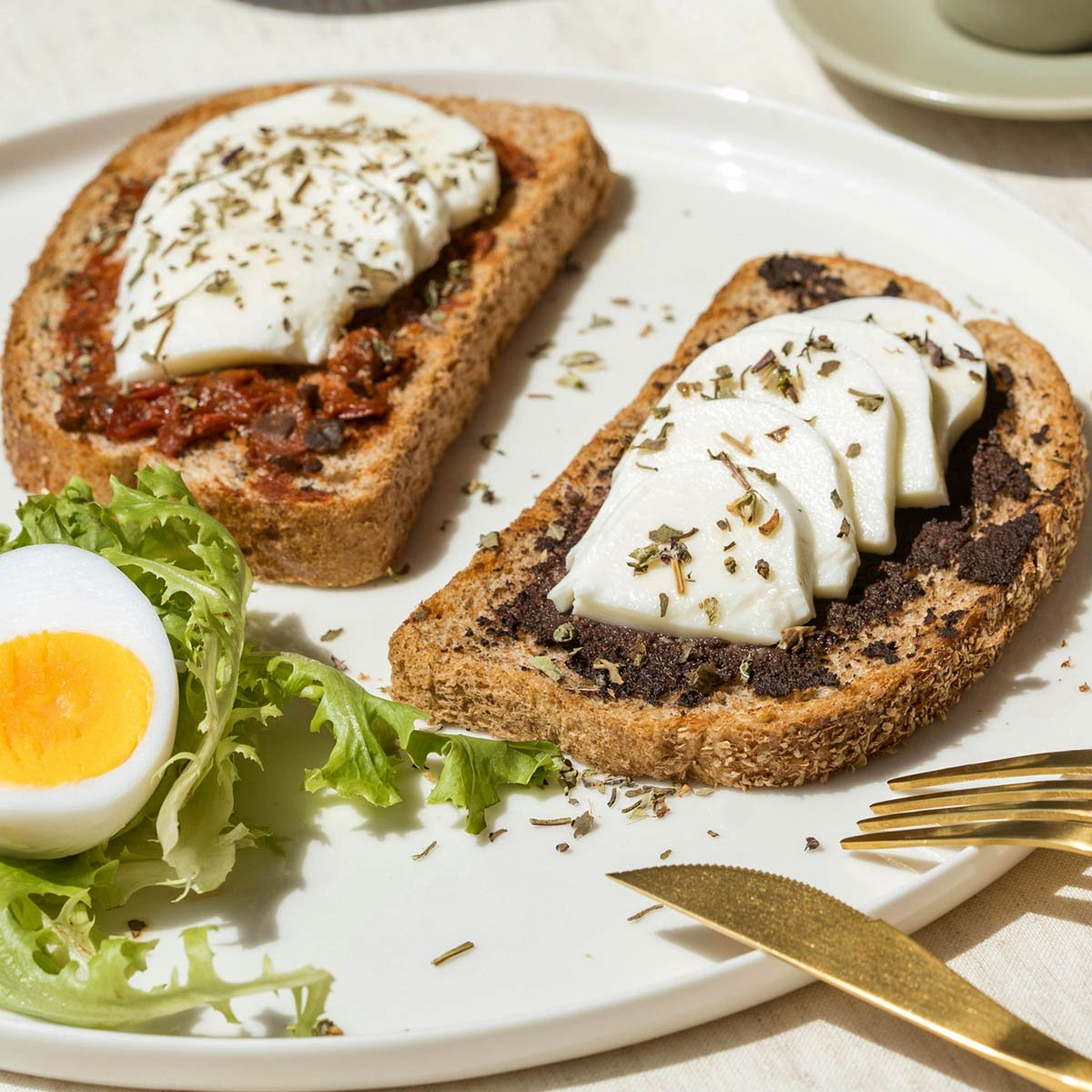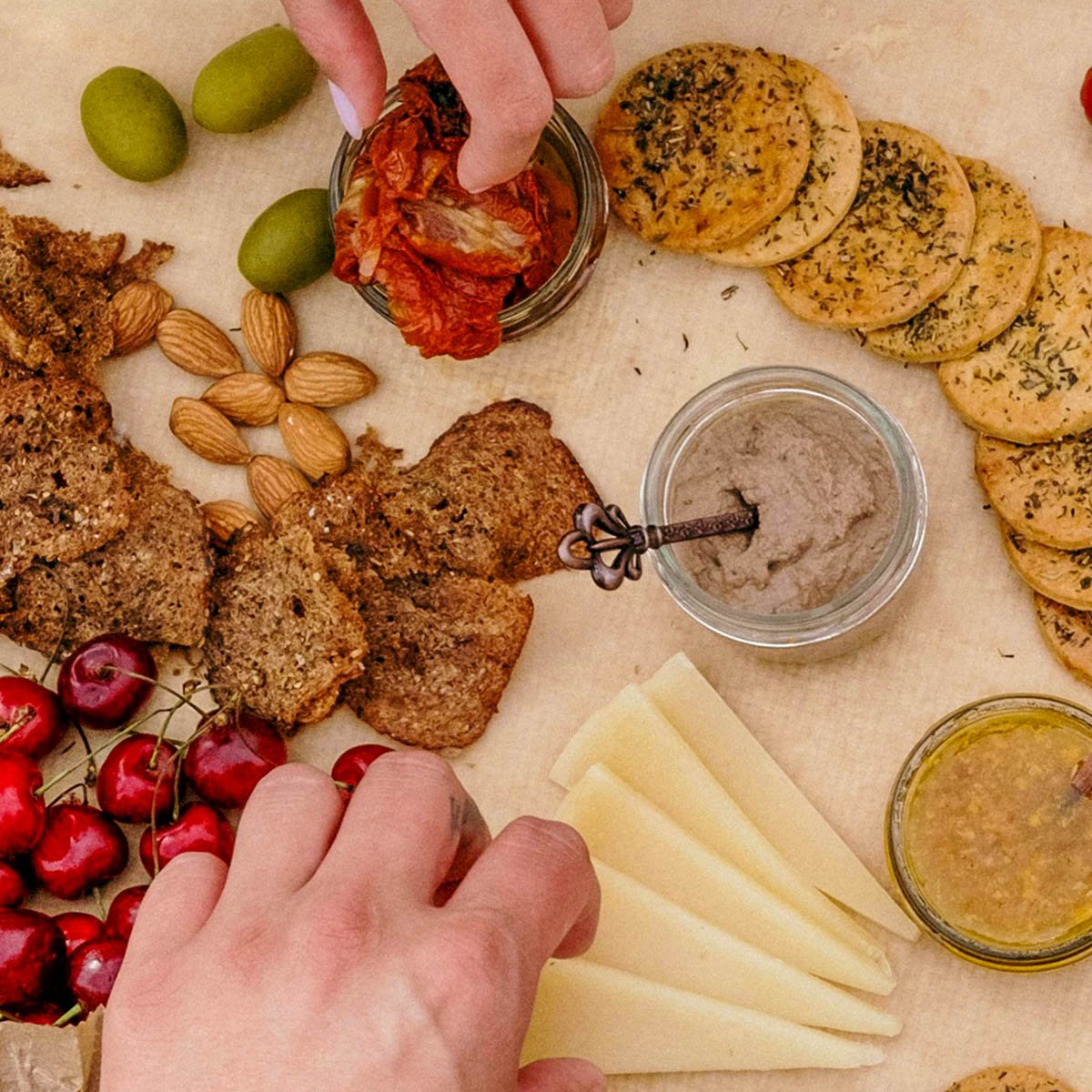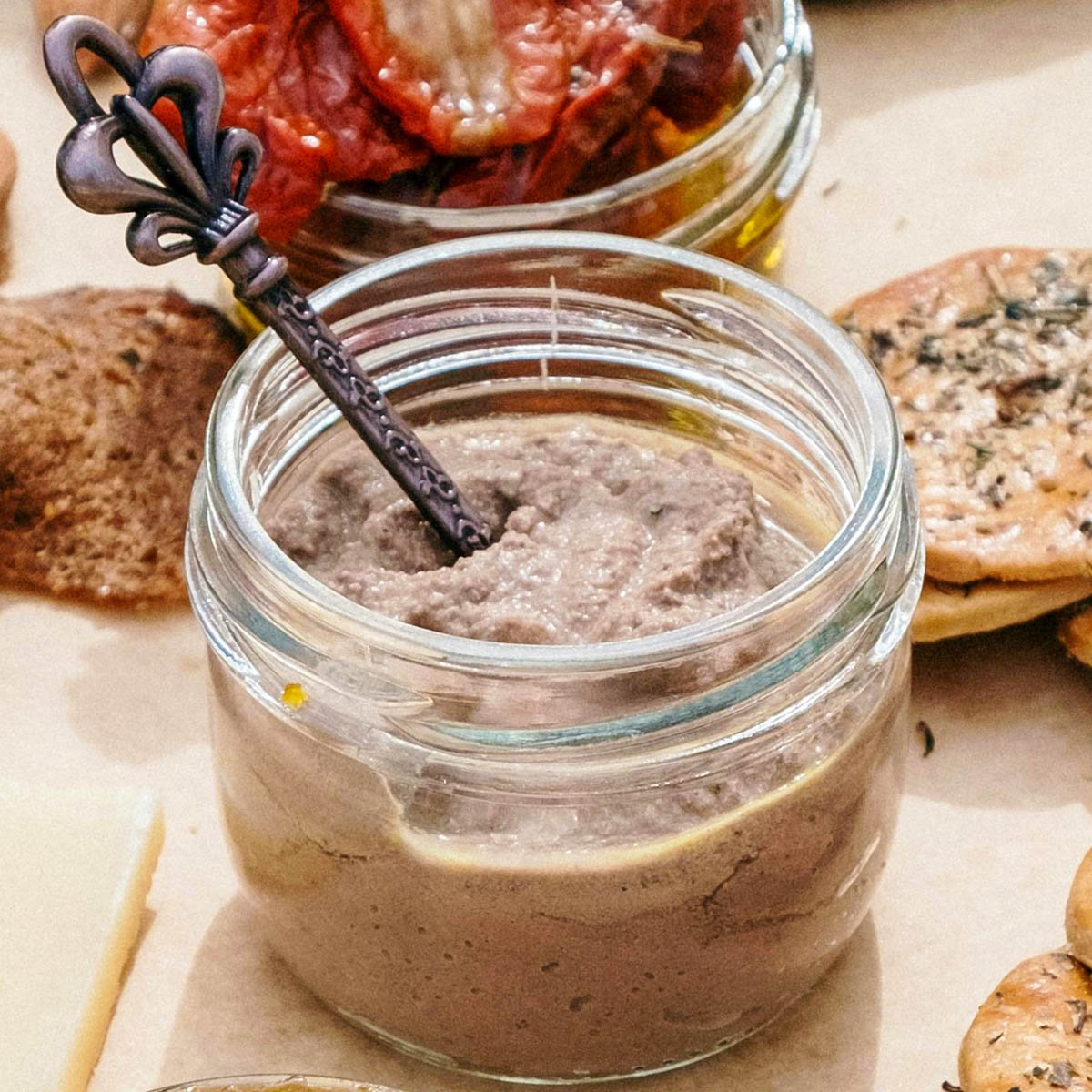Table of Contents
Tapenade is a savory paste or spread made primarily from olives, capers, and olive oil. It originates from the sunny Mediterranean region of Provence in southern France.
The name itself hints at its ingredients. The word “tapenade” comes from tapeno, the Provençal word for capers. Briny, rich, and aromatic, tapenade captures the bold flavors of its ingredients in a smooth concoction that food lovers often enjoy slathered on crusty bread or as a zesty condiment.

In Provence, it's not uncommon to begin a meal with a bowl of tapenade and crackers or breadsticks. It offers guests a taste of the region's vibrant culinary heritage.
The History of Tapenade
Though tapenade is widely associated with French cuisine today, similar olive-based spreads have ancient roots. Olive and caper pastes were enjoyed throughout the Mediterranean for centuries.
Some sources even suggest that the ancient Romans had a version of this spread. The modern form of tapenade, however, was formalized in Provence and is credited to Chef Meynier of Marseille.
In 1880, he created a recipe blending black olives with capers and anchovies. This innovative concoction was named after capers, tapenade's defining ingredient, which cemented the condiment's identity.
Early recipes often included ingredients like tuna as well. Most modern tapenade, though, omits the tuna in favor of a purer olive flavor.
Over time, tapenade became a staple of Provençal tables and spread in popularity across France and beyond. It became emblematic of the region's bold, earthy flavors.

What Goes Into a Traditional Tapenade?
Traditionally, a classic tapenade features a short list of ingredients:
- Black olives, such as Kalamata or Niçoise
- Capers
- Anchovy fillets
- Garlic
- Fresh herbs like thyme or basil
- Lemon juice
- High-quality olive oil
These ingredients are either ground with a mortar and pestle or quickly blended in a food processor until they form a coarse paste.
Anchovies and capers contribute a salty, umami depth. Garlic and herbs add aroma. Olive oil is slowly drizzled in to achieve a spreadable consistency, and lemon juice brightens the overall flavor.
The preparation is straightforward and relies on the quality of each component. In particular, the olives and olive oil make a huge difference in the final taste.
Once prepared, tapenade has a hearty, thick texture. It can be stored in the refrigerator for a couple of weeks, although it rarely lasts that long once served.

Tapenade: Flavorful Variations & Personalization Tips
Traditional & Modern Variations
- Classic Blend: Provençal tapenade usually features black or green olives, capers, anchovies, garlic, herbs (such as thyme or oregano), lemon juice, and olive oil.
- Green vs. Black: Some versions highlight green olives or combine both green and black olives for nuanced flavor and color differences.
- Add‑Ins: Contemporary recipes often incorporate tuna, Dijon mustard, Cognac or Armagnac for added richness and complexity.
Style Variations
- Sun‑Dried Tomato Tapenade: Includes sun‑dried tomatoes, red pepper flakes, garlic, and sometimes herbs like basil or parsley for sweetness and brightness.
- Green Olive & Sun‑Dried Tomato Blend: Combines green olives, sun‑dried tomatoes, capers, garlic, herbs, lemon juice, and optional pine nuts for texture.
Customizing Tips
- Spicy Additions: Boost heat and depth with chili or red pepper flakes, roasted red peppers, sun‑dried tomatoes, or a dash of Worcestershire sauce.
- Herbs & Citrus: Fresh basil, parsley, thyme, or oregano complement lemon juice or zest, adding brightness and herbal aroma.
- Texture Control: Use a mortar and pestle for a coarser, rustic texture; or a food processor for a smoother, spreadable finish.

How Tapenade is Used in Cooking
In Provence, tapenade is a ubiquitous condiment. Locals enjoy it as an apéritif snack, spreading it generously on baguette slices or tartines.
Other popular uses include:
- As a dip served alongside raw vegetables (crudités)
- As a garnish on roasted meats and grilled fish
- As a stuffing or flavor enhancer in poultry dishes
In the United States and the UK, tapenade is often found in gourmet sandwiches, atop crackers at wine bars, or spooned over bruschetta. Its intense flavor makes it a favorite among chefs in high-end and fusion cuisine.
Similar olive spreads exist in other Mediterranean cuisines. Italy has olive paste, and Greece offers its own regional relishes. But the Provençal tapenade stands out thanks to its caper and anchovy punch.
As more people seek out bold, umami-rich flavors, tapenade has gained a wider fanbase. Jars of it can now be found in specialty food stores around the world.
Tapenade Trivia and Kitchen Tips
Tapenade has more layers of intrigue than it may seem. For example:
- Despite being mostly olives, “tapenade” is named after capers. The name literally translates to “caper paste” in Provençal.
- The original 19th-century recipe included tuna fish as a major component. This is rarely seen in modern recipes.
Here are a few preparation tips from chefs in Provence:
- Use whole olives and pit them yourself. Pre-pitted olives often lose their briny flavor.
- Experiment with green olives for a brighter and more bitter variation.
- Try spicing it up with chili flakes or folding in sun-dried tomatoes or roasted red peppers.
Tapenade doesn't require a strict recipe. It's a forgiving spread that invites experimentation. The core elements remain the same: olives and capers, finely balanced and blended into a paste that tastes unmistakably Mediterranean.




























